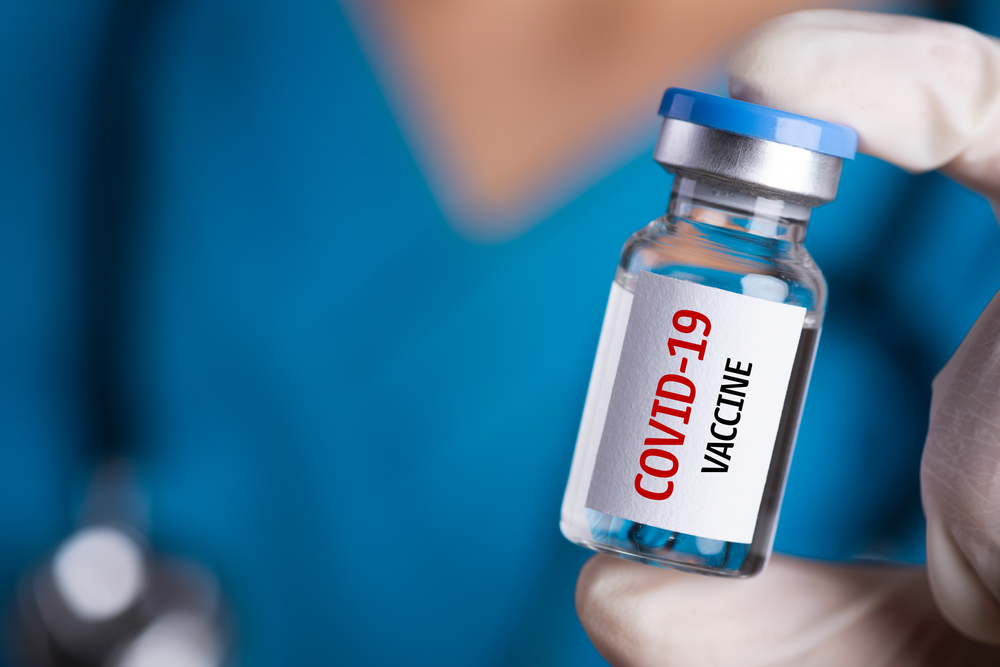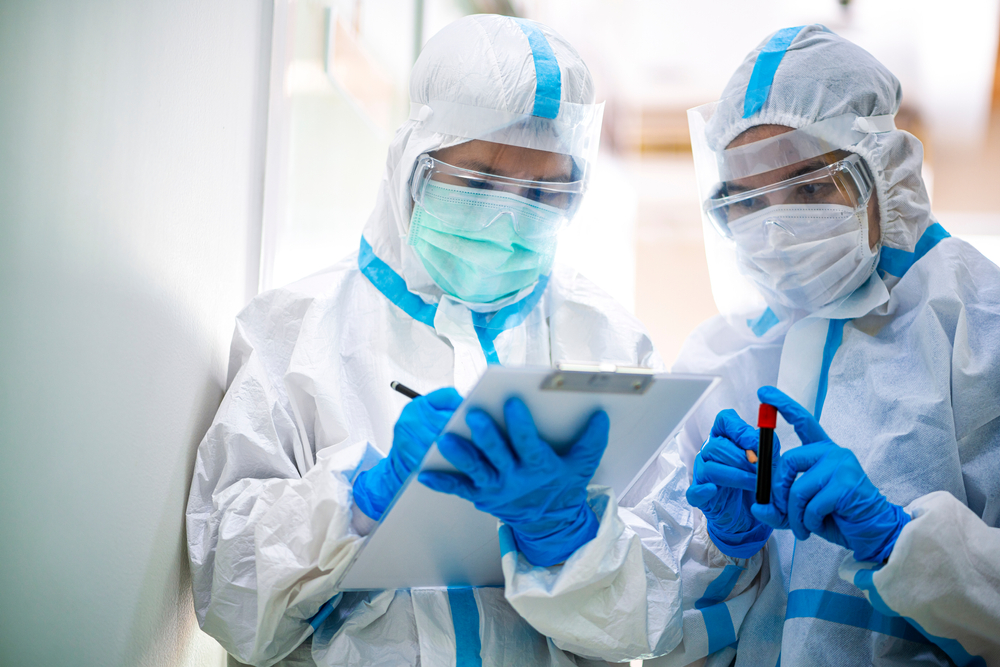Published November 13, 2021 in Medical News Today.
Written by Jocelyn Solis-Moreira, Fact checked by Anna Guildford, Ph.D.
Since the beginning of the pandemic, healthcare workers have administered billions of COVID-19 vaccine doses. In this Special Feature, we speak with medical experts about how scientists made coronavirus vaccines so rapidly without compromising safety.
SARS-CoV-2, the virus that causes COVID-19, was first identified in December 2019. By December 11, 2020Trusted Source, the Pfizer vaccine became the first to receive emergency use authorization from the Food and Drug Administration (FDA).
Creating a vaccine in under 1 year is no small feat. While the coronavirus pandemic made a new normal of mask-wearing and physical distancing, it also spurred global cooperation for vaccine research and distribution.
However, a vaccine is only effective if people are willing to receive it. With rapid research development, some may be concerned that the vaccine was rushed, and with these concerns comes vaccine hesitancy.
A study that appeared in Nature MedicineTrusted Source in October 2020 surveyed 19 countries to investigate the acceptance of COVID-19 vaccines. The researchers found that only 71.5% of the respondents would consider taking a COVID-19 vaccine and that only 48.1% would take it if their employer recommended it.
By October 2021, healthcare workers had delivered more than 7 billion doses of the COVID-19 vaccine globally. However, vaccine hesitancy remains.
According to an ongoing Kaiser Family Foundation survey, 16% of respondents will “definitely not” get the vaccine.
Considering that the fastest vaccine — the mumps vaccine, which is now part of the MMR vaccine — took 4 years to develop, it is natural to have some apprehension over the safety and effectiveness of a new vaccine.
Dr. Sam Sun is a chief resident at Baylor College of Medicine in Houston and the director of the inDemic Foundation, a nonprofit organization that provides information about COVID-19.
He told Medical News Today that transparency throughout the vaccine process will be key to debunking misinformation and building the public’s trust.
Other coronaviruses
Researchers were not starting from scratch when they learned about SARS-CoV-2, the virus that causes COVID-19.
SARS-CoV-2 is a member of the coronavirus family. According to the National Institute of Allergy and Infectious DiseasesTrusted Source, there are hundreds of coronaviruses. These include four that can cause the common cold, as well as the coronaviruses that sparked the SARS, or severe acute respiratory syndrome, epidemic in 2002 and the emergence of MERS, or Middle East respiratory syndrome, in 2012.
Dr. Eric J. Yager, an associate professor of microbiology at Albany College of Pharmacy and Health Sciences in Albany, NY, told MNT that scientists have been studying coronaviruses for more than 50 years. This meant that scientists had existing data on the structure, genome, and life cycle of this type of virus.
Dr. Yager explained, “Research on these viruses established the importance of the viral spike (S) protein in viral attachment, fusion, and entry, and [it] identified the S proteins as a target for the development of antibody therapies and vaccines.” He continued:
“Early efforts by scientists at Oxford University to create an adenovirus-based vaccine against MERS provided the necessary experimental experience and groundwork to develop an adenovirus vaccine for COVID-19.”
Worldwide collaboration
Under normal circumstances, making a vaccine can take up to 10–15 years. This is because of the complexity of vaccine development.
Dr. Michael Parry, the chair of infectious diseases at Stamford Health in Stamford, CT, told MNT that vaccines train our immune system to remember an infectious agent without us having to contract it.
“Traditionally, they have contained weakened or inactivated parts of a particular virus (antigen) to trigger an immune response within the body. These vaccines will prompt the immune system to respond, much as it would have on its first reaction to the actual pathogen.”
However, amid a global pandemic, time was a luxury the world could not afford. Researchers quickly mobilized to share their coronavirus data with other scientists.
Dr. Yager said that thanks to advances in genomic sequencing, researchers successfully uncovered the viral sequence of SARS-CoV-2 in January 2020 — roughly 10 days after the first reported pneumonia cases in Wuhan, China. The ability to fast-track research and clinical trials was a direct result of this worldwide cooperation.
Funding for COVID-19 vaccine research
Vaccine research is costly. In 2018, a study in The Lancet Global HealthTrusted Source estimated the cost of early development and initial clinical safety trials for a typical vaccine to be in the range of $31–68 million. Large scale trials to determine the efficacy of a vaccine candidate would add to these figures.
In an accelerated timetable with a new coronavirus, this cost might be higher. For this reason, funding from sources ranging from the government to the private sector was critical in making COVID-19 vaccines.
In the United States, Operation Warp Speed (OWS)Trusted Source partnered with multiple institutions, including the National Institutes of Health (NIH) and the Centers for Disease Control and Prevention (CDC), to develop, manufacture, and distribute 300 million doses by early 2021.
“By providing resources and assuming the financial risk, OWS allows companies to produce and stockpile vaccine doses even before the company knows if the vaccine is going to work,” said Dr. Yager.
“Also, by investing in multiple companies and vaccine platforms at once, OWS increased the odds of having a vaccine, or vaccines, available by the beginning of 2021,” he added.
The European Commission has also funded several vaccine candidates and worked with others in pledging $8 billion for COVID-19 research.
The United Kingdom government’s Vaccine Taskforce has also been a significant contributor to a wide variety of vaccine research. Recipients of this funding helped develop the AstraZeneca vaccine. The designers of this vaccine were the first to publish peer reviewed efficacy resultsTrusted Source from phase 3 trials.
mRNA technology
The Pfizer and Moderna COVID-19 vaccines were the first mRNA vaccines that humans received outside of clinical trials.
Dr. Thomas Kenyon, chief health officer at Project HOPE and former director of the CDC Center for Global Health, told MNT that mRNA technology is something the NIH had been working on for some time.
Dr. Kenyon explained that mRNA vaccines deliver the coronavirus S protein’s genetic material. Our own cells then use the information stored in the mRNA to make the S proteins. The immune system is then “trained” to recognize these spikes, preparing it for a future attack.
“When challenged with the real virus, your immune system attacks the real surface protein of the virus and inactivates it through the immune system capabilities,” Dr. Kenyon told MNT.
Concerns over mRNA vaccine
According to Dr. Kenyon, misinformation surrounding mRNA vaccines stems from a concern that the vaccine infects people with the virus.
“Nobody is getting infected with a COVID-19 vaccine. It is only the surface protein that would be replicated because we have given you the messenger RNA. It is not the entire virus,” he explained.
One misconception is that an mRNA vaccine would not be useful when the virus mutates.
A July 2020 study that appears in Frontiers in Microbiology confirms that the virus mutates. After analyzing 48,635 samples of SARS-CoV-2, the researchers identified an average of 7.23 mutations per sample.
While mutations are a certainty, Dr. Sun said that this should not be a cause for alarm.
“There has been an estimated 250,000 variants or strains of SARS-CoV-2 sequenced in the lab. For the most part, the virus has a low mutation rate compared to the mutation rate of the influenza virusTrusted Source,” Dr. Sun explained. “The spike protein is important for the ability of the virus to infect humans’ cells. I think it would not mutate enough for the vaccines to be ineffective.”
Another concern is whether natural immunity would be more effective than a vaccine. However, a CDC study from November 2021 found that COVID-19 mRNA vaccines are about five timesTrusted Source more effective in preventing hospitalization than a previous infection.
“Natural immunity is not better than vaccine-acquired immunity. These vaccines have the potential to provide you with protective immunity without the risks associated with infection,” Dr. Yager told MNT.
Rigorous guidelines for clinical trials
In the U.S., the FDATrusted Source meticulously reviews the data from each clinical trial phase before granting approval or, in the case of public health emergencies, emergency use authorization.
Dr. Kenyon said that before any clinical trial can start, a data monitoring and safety board must approve a study protocol.
A phase 1 trial focuses on the safety of the vaccine candidate. The researchers give escalating doses of the vaccine to healthy volunteers to determine side effects and tolerability.
Phase 2 trials expand their recruitment and may include participants with health conditions such as obesity, cancer, and diabetes. There is also active recruitment for participants of various demographics. The trial continues to test the safety of the vaccine and looks at the drug’s initial efficacy and how it affects the immune system.
Phase 3 trials recruit thousands of participants to measure the efficacy of the vaccine in preventing disease.
Clinical trials may combine their phases, which, according to Dr. Yager, is a common practice that is still held to the same ethical, scientific, and statistical standards as when each phase takes place separately. He explained:
“One potential benefit of combined trials, particularly in phase 2/3, is that since the vaccine is being evaluated in subgroups of individuals, results from the study expedite the identification of patient factors that impact vaccine safety or efficacy.”
Dr. Yager said that a major factor behind the rapid completion of clinical trials was a high interest in volunteers for vaccine studies. This helped enrollment goals for reaching thousands of people relatively quickly.
Another factor was the increased number of testing sites to facilitate enrollment and collect large amounts of data.
Safety monitoring after vaccination
Even after emergency use authorization has been granted, Dr. Kenyon said that the scientists will continue to collect safety data, as they will follow the participants for up to 2 years. This adds another layer of reassurance as a person shifts from a trial to a real-life setting.
“The trial is tens of thousands of participants, but for the vaccine program, you are getting into the millions. While unlikely, it may uncover any undetected toxicities that were not picked up by the trial.”
The CDCTrusted Source will monitor safety after vaccination for acute care and long-term care facilities through the National Healthcare Safety NetworkTrusted Source. For the general population, there is a smartphone application called V-safeTrusted Source.
“It is a smartphone-based system where you will be contacted actively by the CDC to see how you are doing after being vaccinated and [it will], therefore, pick up any adverse events that were not picked up in the trials,” Dr. Kenyon explained.
MNT takeaways
The pandemic has ushered in a new era of vaccine research. The combination of the global collaboration of scientists and the development of mRNA vaccines is akin to the “landing-on-the-moon moment,” according to Dr. Yager.
As COVID-19 cases continue to surge in many areas of the world, the challenge for widespread vaccine rollout will lie in its uptake by the public.




